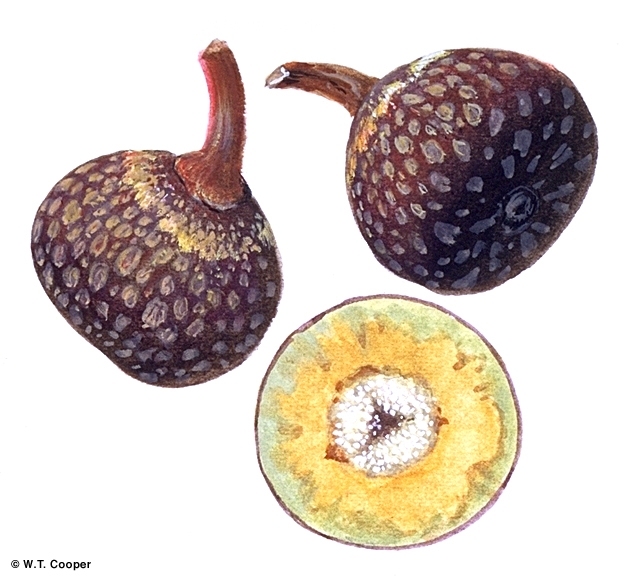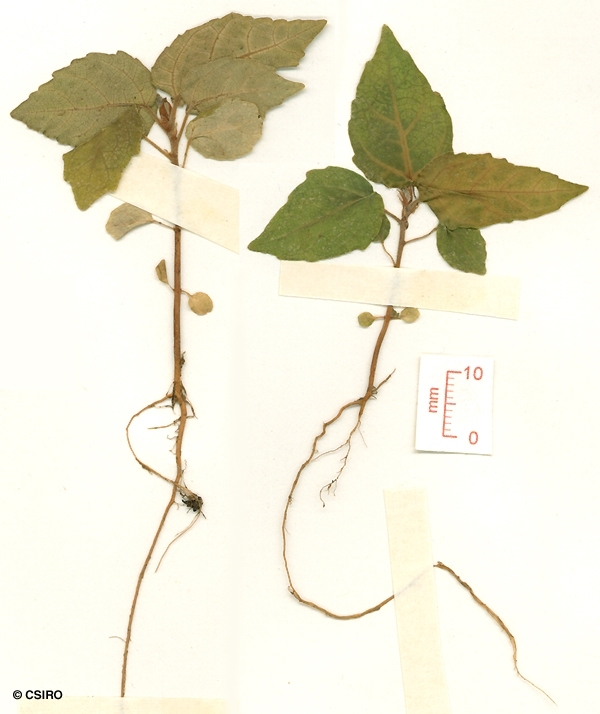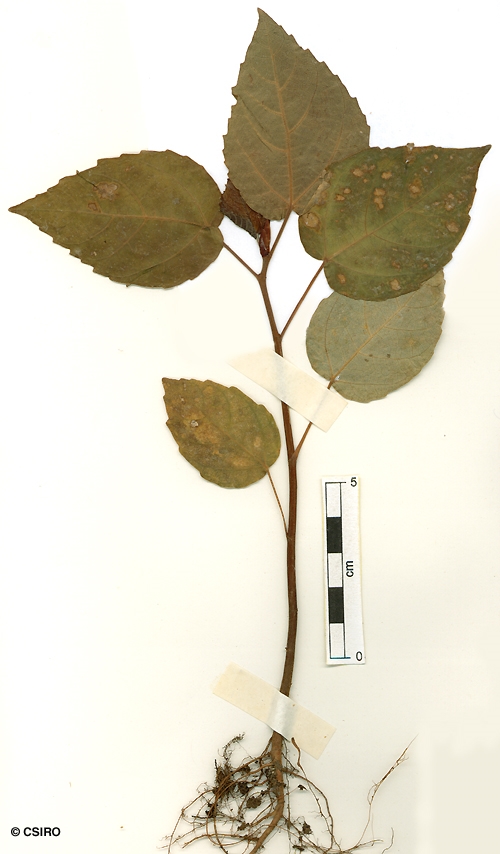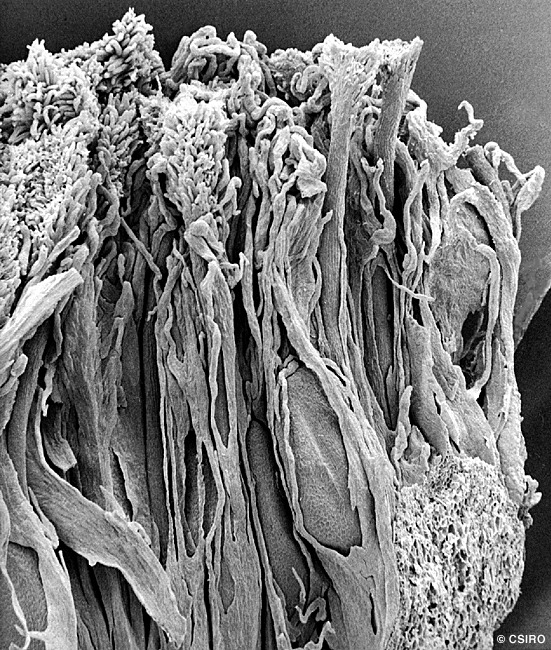Australian Tropical Rainforest Plants - Online edition
Ficus nodosa Teijsm. & Binn.







Teijsmann, J.E. & Binnendijk, S. (1867) Natuurkundig Tijdshrift voor Nederlandsch Indi 29: 245. Type: Crescit in insulis Moluccanis prov. Ambon, DE FRETES. Nom. incol. Gondal.
Cape Fig; Fig, Cape; Fig, Rocky River; Rocky River Fig
Figs produced on special leafless shoots which occur in large bunches at a few points on the trunk and larger branches. Figs pedunculate, +/- globose, depressed globose or depressed pyriform, about 40 x 45 mm. Orifice closed by +/- interlocking apical bracts and inflexed internal bracts. Inner surface of the fig irregularly lobed.
Cotyledons +/- orbicular, about 3-4 mm diam. At the tenth leaf stage: leaf blade broadly ovate to cordate, apex acute to acuminate, base cordate, margins crenate to dentate, about 5-10 teeth each side of the leaf blade; upper surface of the leaf blade with a few hairs along the midrib, lower surface hairy on the midrib and lateral veins; oil dots or glands visible with a lens on the underside of the leaf blade; stipules sheathing the terminal bud, shed early, narrowly triangular, with a few hairs near the apex. Seed germination time 41 days.
Occurs in CYP and NEQ. Altitudinal range from near sea level to 100 m. Usually grows in gallery forest along creeks and rivers. Also occurs in Malesia and the SW Pacific islands.
Fruit eaten by Bare-backed Fruit bats. Cooper & Cooper (1994).
A large tree suitable for cultivation in tropical parkland. Older trees have smooth pinkish trunks with high spreading buttresses.





